Prior to buying any type of stroller for your pet, you need to research your options. One of the main considerations to take into account and measure your dog to get the size and weight of the pet. Different makes and models of pet strollers feature a wide variety of weight limits and internal dimensions and choosing one that is too small will restrict and confine your pet to an uncomfortable traveling position.
So, it makes sense to learn how to measure dog height and weight to make it as comfortable as possible. You can use usually items for it, like a tape measure, ruler, and others. All it can help to measure a dog. If you are going to be using the stroller for carrying more than one dog makes sure you measure each one and give them plenty of room to move around.
How to measure a dog’s height – The Easy Way
Height:
The fact is the dog is not going to lie down quietly every time you take it out in the stroller. Dogs are very inquisitive animals and like to know what’s going on around them, and as such, they will often lie down, sit and stand throughout a journey. So, make sure to measure a dog’s height and allow 5 – 6 inches above this to ensure there is plenty of room for the pet to stand up, this is particularly important if you are looking for a pet jogging stroller that you will be using on rough terrain.
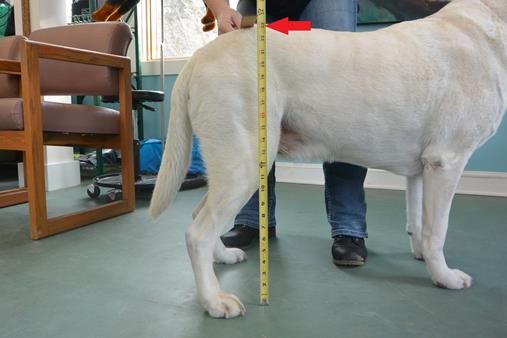
If you have a puppy, you should try and determine the size it will grow to as an adult, this will save you buying another stroller when the pet outgrows the original one. Just by searching the internet for the breed, you can quickly determine the average dog’s height.
Length:
The length of your dog is another important aspect to take into consideration. Many people suggest measuring your dog from the chest to the hindquarters; however, this does not take into account the dog’s head that sticks out in front of the chest. Measuring the length of your dog from its nose to the hindquarters will give your pet enough room to get into a comfortable position. Always add a few inches on to the length to allow the pet plenty of room to move around.
Width:
You may think that the width of a stroller is not important, but some dogs do like to lie on their side, especially if they have a disease such as Arthritis or Hip dysplasia. So if this is the case, measure your dog’s height when lying on their side.
Weight of the Dog:
The weight limit of a particular stroller should not be confused with the dimensions of the cabin. For example, just because the maximum weight limit of a stroller states 70 Lbs and your dog weighs 60 Lbs it doesn’t mean that your dog will fit inside the cabin. The weight limit of a pet stroller is just what it says, a weight limit, it has nothing to do with the size of the cabin.
If you have a puppy or young dog you need to consider the weight it will be when fully grown. We have a handy chart that will calculate the fully grown weight of a puppy, and although it is only a rough guide, it will give you some idea of the adult weight.
1. Place your pet against a wall. To measure your dog’s height, it will need to be standing. Also, you should place the dog against a door or wall. This will provide a stable point for measurement.
Your dog should be standing straight. Keep your pet straight with its stance. Your dog’s legs should be parallel to the ground and your feet should be at shoulder width.
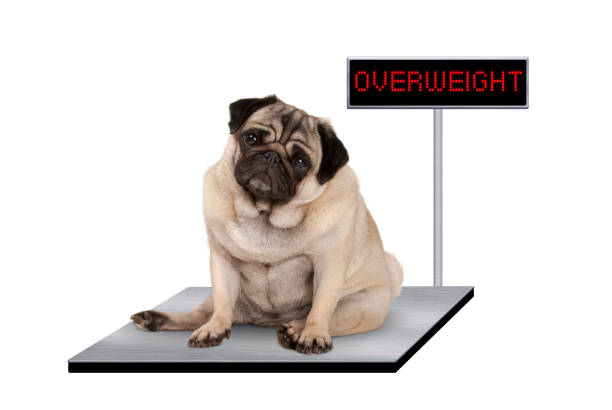
2. Pay attention to the withers of your pet. The highest point on the dog’s shoulder blades is its withers. It’s located behind the dog’s neck. Look around the area and locate the bony top of the shoulder.
A short-coated dog is more difficult to find the withers. It is possible to see the dog’s withers by simply looking at its body.
3. Place a level on your dog’s back. Place along, like a carpenter’s level, along the dog’s back. The end should touch the wall. After ensuring that the level is level, mark the spot where the bottom touches the wall. This will transfer the dog’s height to the wall.
You can also use a pencil to make a mark on the wall if you don’t want to make a mark. If you don’t feel like marking up your wall, you can hold your finger on that spot or stick a piece of removable measuring tape there.
You can also measure against your fridge and use a magnet for marking your spot.
4. Measure your dog’s height from the ground to mark your level. Let the pet move away from the wall. After the area has been cleared, you can measure the distance from the ground to your mark. This is your dog’s height from its miters to the ground.
This measurement can be made with a yardstick or a measuring tape, ruler.
Accuracy in Measurement Dog’s Height
1. You should keep the dog still.
To get an accurate measurement, your pet should not move. This is often easy for show dogs and highly trained dogs. This can be difficult for more active dogs.

Get help if your dog won’t stay still. You may find that they can hold your pet still, or distract it enough to take an accurate measurement.
2. A height measuring tool is necessary.
You can buy measuring sticks from veterinary suppliers or a measuring tape with an adjustable arm that extends to the side. These measuring sticks are great for dogs as they allow the bottom to touch the ground while the arm can be adjusted to reach the dog’s withers.
This type of measuring tool must be kept level. Many height measuring tools like a measuring tape sold today have a level built in.
3. Measure your dog’s height for shows using a wicket.
To ensure that show dogs fit within the breed parameters, they must be measured. Use a tape measure for it and below other steps that we talking about before. Dog show officials use a wicket (a u-shaped measuring tool) to measure dogs. The round end is placed over the dog’s shoulder blades. They make sure the feet touch the ground with the wicket. The dog should not be higher than the permitted height.
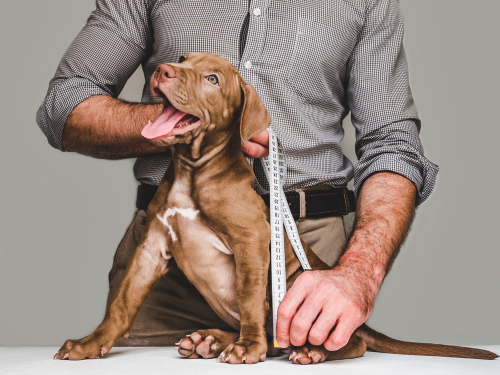
The official can adjust the dog’s height of the wicket based on the measurements of the breed.
This method can be used but you should take the time to teach your dog how to use it. You can train your dog to use the wicket if you’re training it for a show.
How to weigh your dog
Below is a simple example of how to weigh your pet
1. Weigh yourself = 171 Lbs
2. Weigh Yourself While Holding the dog = 206 Lbs
3. Subtract your weight from the weight of you holding the dog, eg: 206 – 171 = 35 Lbs (the weight of your dog) If the pet is too large or too heavy to pick up, take it to your local vets and have it weighed.
Some manufacturers will overestimate the maximum weight limit of their dog strollers. The best way to determine if a stroller will take your dog’s weight is to read the Amazon reviews. These reviews are by people who have actually purchased the product, they are not trying to sell you the product they are leaving genuine and often informative feedback.
If you are looking for an off road or pet jogger, we have an article about pet jogging strollers that will walk you through (no pun intended) all of the available options when choosing the perfect pet jogging stroller for your pet.
Most physical exams for dogs and humans begin with the dog jumping on the scale to weigh themselves. Dogs may enjoy this routine, even though it is not something that people like. However, if the vet treats them, they might be happy to do so. You might consider weighing your dog at home between visits to the veterinarian. Below, learn how and why you should weigh your pet at home.
How Often Do I Need to Weigh My Dog?
Dr. Susan O’Bell is a staff veterinarian at the Massachusetts Society for the Prevention of Animal Cruelty. The Angell Animal Medical Center in Boston recommends that dogs be weighed at the very least once a calendar year. Dr. Matthew Rooney, owner of Aspen Meadow Veterinary Specialists, Longmont, Colo. says that most pet owners are happy with weighing their dogs every six to twelve months.
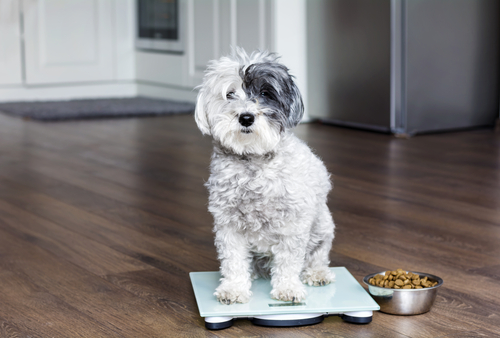
They also suggest that you weigh your dog more often depending on their age and current health condition. O’Bell states that puppies should be weighed at least once every three to four weeks for the first four to six months of their lives. Regular weight checks are also necessary for chronic medical conditions such as diabetes or changes in appetite. Your veterinarian will recommend the frequency at which your pet should be weighed.
You can weigh your dog at your home if it is stressful for your pet or difficult to schedule appointments for him to weigh in. O’Bell said that many clients have asked if their home scales are allowed. “I usually tell clients that they can use their home scales to determine basic trends. However, any major discrepancies should then be confirmed on the hospital scale.”
How can I weigh my dog at home?
Rooney states, “If your dog can be lifted and held still for a few seconds, you can weigh him on the bathroom scale.”
Place your bathroom scale on a flat, hard surface. O’Bell says this is the best way to use your scale. It also eliminates the possibility of your pet falling from a higher surface such as a countertop. Very small dogs. O’Bell suggests using a baby weight because even a quarter to a half pound weight loss or gain can make a difference when your dog’s total body weight is less than ten pounds. Do not force your dog to be weighed if he does not enjoy being held. You could be hurt if he is struggling.
Rooney recommends the following method to weigh your dog. First, you should weigh yourself and then record your weight. Next, take your pet to the scale and weigh him. To determine your dog’s weight, subtract your own weight from the combined weight of your dog and you.
A dog scale can be purchased online for large dogs or at large pet supply stores. The prices start at $100 and the models come in different weights. Rooney also says that almost all vets will let you weigh your dog at no cost. Use the same scale every time. He said that scales can vary greatly, so weight on one scale could be five to ten lbs different if you use another scale.
What if my dog doesn’t like being weighed?
O’Bell warns that the subtle instability of a scale can be frightening for dogs, especially larger ones. She suggests that you weigh your dog as soon as possible. After he’s weighed, praise him with your voice.
Clicker training can be used to calmly ease your dog into getting weighed. O’Bell stated that you can reward your dog for sniffing the scale and then for putting one foot on the scale. Finally, you can give him a sit or stand position on the scale to get an accurate weight-in. She says, “We always welcome clients who bring their dogs to the hospital to get used to being weighed and/or to say hello to the staff without any of those more stressful aspects of a hospital stay happening that day.”
How do I accurately weigh my dog?
- Place the dog on the platform. Then, let it settle down. Keep track of the dog’s weight on the scale.
- Move the pet from the platform. Take the platform’s weight.
- Add the weight of the platform to the first measurement. This is your dog’s weight.

Prior to buying any type of stroller for your pet, you need to research your options. One of the main considerations to take into account is the size and weight of the pet. Different makes and models of pet strollers feature a wide variety of weight limits and internal dimensions and choosing one that is too small will restrict and confine your pet to an uncomfortable traveling position.
So, it makes sense to learn how to measure and weigh your dog to make it as comfortable as possible. If you are going to be using the stroller for carrying more than one dog makes sure you measure each one and give them plenty of room to move around.
How to Measure and Weigh Your Dog – The Easy Way
Height:
The fact is the dog is not going to lie down quietly every time you take it out in the stroller. Dogs are very inquisitive animals and like to know what’s going on around them, and as such, they will often lie down, sit and stand throughout a journey. So, make sure to measure your dog’s height and allow 5 – 6 inches above this to ensure there is plenty of room for the dog to stand up, this is particularly important if you are looking for a pet jogging stroller that you will be using on rough terrain.
If you have a puppy, you should try and determine the size it will grow to as an adult, this will save you buying another stroller when the dog outgrows the original one. Just by searching the internet for the breed, you can quickly determine the average height of the fully grown dog.
Length:
The length of your dog is another important aspect to take into consideration. Many people suggest measuring your dog from the chest to the hindquarters; however, this does not take into account the dog’s head that sticks out in front of the chest. Measuring the length of your dog from its nose to the hindquarters will give your pet enough room to get into a comfortable position. Always add a few inches to the length to allow the dog plenty of room to move around.
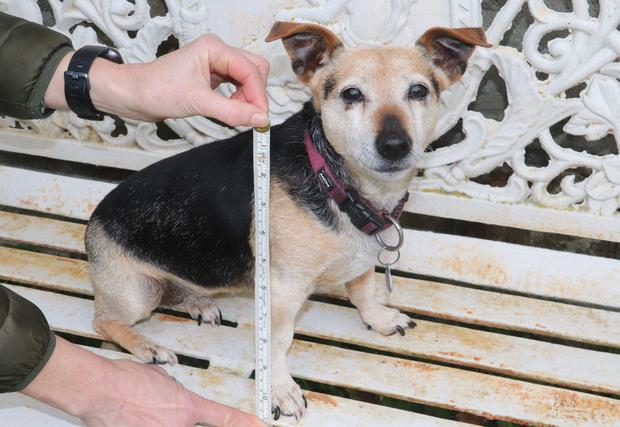
Width:
You may think that the width of a stroller is not important, but some dogs do like to lie on their side, especially if they have a disease such as Arthritis or Hip dysplasia. So if this is the case, measure them when lying on their side.
Weight of the Dog:
There is a difference between weight capacity and cabin size of a stroller. Just because a stroller’s maximum weight limit is 70 pounds and your dog weighs 60 pounds doesn’t mean your dog can fit in the cabin. It doesn’t matter what size the cabin is, the weight limit of a pet stroller is just what it says, a weight limit.
In case you have a puppy or young dog, you will need to think about its full weight. Our handy chart can help you calculate the puppy’s full grown weight, although it is only a rough guide.

What Scales?
Weighing your dog:
Below is a simple example of how to weigh your dog
1. Weigh yourself = 171 Lbs
2. Weigh Yourself While Holding the dog = 206 Lbs
3. Subtract your weight from the weight of you holding the dog, eg: 206 – 171 = 35 Lbs (the weight of your dog) If the dog is too large or too heavy to pick up, take it to your local vets and have it weighed.
Some manufacturers will overestimate the maximum weight limit of their dog strollers. The best way to determine if a stroller will take your dogs weight is to read the Amazon reviews. These reviews are by people who have actually purchased the product, they are not trying to sell you the product they are leaving genuine and often informative feedback.
If you are looking for an off road or pet jogger, we have an article about pet jogging strollers that will walk you through (no pun intended) all of the available options when choosing the perfect pet jogging stroller for your cat or dog.
F.A.Q.
How can I predict how tall my puppy will be?
Measure your dog height at 6 months old to predict his adult height. Multiply this number by 100, then divide 75 by the result. The puppies reach approximately 75% of their adult height by 6 months.
Is dog height measured to head or back?
The dog’s height is determined by its shoulders and not it’s head. Place your pet on a solid, flat surface to measure dog. You might consider placing your small dog on a table or counter. You should ensure that her legs are parallel to the ground. That is, they should be at a 90 degree angle to the surface.
How do we measure the size of dog’s?
Dog’s height at the withers, oblique length, chest girth, behind the shoulder blades, and girth of metacarpus determine the size and proportions of an animal. In domestic fowl, additional measurements such as the length of the carina or shank are taken.
Can you weigh a dog on a human scale?
Rooney states, “If your pet is small enough that you can lift it, and you are able to hold him still for at least, you can weigh him on the scale in your bathroom.” To determine your dog’s weight, subtract your own weight from that of your pet.
